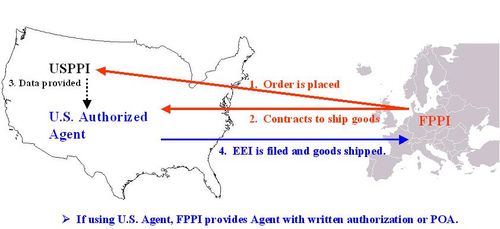
An official website of the United States government
Here’s how you know
Official websites use .gov
A .gov website belongs to an official government organization in the United States.
Secure .gov websites use HTTPS
A lock (
) or https:// means you’ve safely connected to the .gov website. Share sensitive information only on official, secure websites.
-
//
- Census.gov /
- Newsroom /
- Census Blogs /
- Global Reach /
- Clarification Of Routed Export Transactions
Clarification Of Routed Export Transactions
Clarification Of Routed Export Transactions

The Foreign Trade Regulations (FTR) defines a routed export transaction as, “an export transaction in which the foreign principal party in interest (FPPI) authorizes a U. S. agent to facilitate the export of a shipment from the U. S. and to prepare and file electronic export information (EEI).” Routed export transactions are a risk in that these transactions shift the control of the movement of the goods and the filing of the EEI from the U. S. Principal Party in Interest (USPPI) to the FPPI. The FPPI directs the movement of the goods out of the U. S. and authorizes the U. S. agent to file the Automated Export System record for the shipment. Though the FPPI is “controlling” the export transaction, the USPPI is still responsible for providing their name, address, and all the commodity information to the filing agent (see FTR section 30.3(e) for a detailed listing of the items).
Share
 Yes
Yes
 No
NoComments or suggestions?


Top
